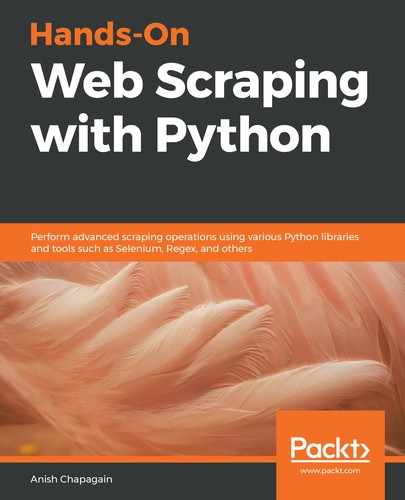So far, we have explored various tools and techniques regarding web scraping via the use of the Python programming language.
Web scraping, or web harvesting, is done in order to extract and collect data from websites. Web scraping comes in handy in terms of model development, which requires data to be collected on the fly that's true, relevant to the topic, and accurate. This is desirable as it takes less time compared to implementing datasets. The data that's collected is stored in various formats, such as JSON, CSV, XML, and more, is written to databases for later use, and is also made available online as datasets.
Websites also provide web APIs with a user interface to interact with information on the web. This data can be used for research, analysis, marketing, machine learning (ML) models, information building, knowledge discovery, and more in the field of computer science, management, medicine, and more. We can also perform analysis on the data that's obtained through APIs and publicly, or freely, available datasets and generate an outcome, but this process isn't classed as web scraping.
In this chapter, we will learn about topics that are applicable to collected or scraped data and learn about some advanced concepts that are worth knowing about from an information and career perspective:
- Managing scraped data
- Analysis and visualization using pandas and matplotlib
- ML
- Data mining
- What's next?
